THE NECESSARY EQUIPMENT
To make the planter you need:
- 2 pieces of PREMIUM natural vegetable collar leather - 20 x 30 cm - Thickness 2.5 mm
- 1 box of Meisi M50 wire - 0.55 mm
- 2 saddle needles with round tip
- 1 bar of beeswax
And the following tools:
A : a pen for tracing
B : a former to mark the stitching points and an awl to pierce the leather. I haven't yet invested in a real diamond awl to pierce leather, it's more of an awl. In any case, it does the job required for this project correctly.
C : one or more cutting tools (scalpel or cutter). Note: take new blades.
D : a bone edge / smoother. These two tools are used for finishing the edges.
E : sewing needles / brown thread. The needles have a round or curved tip. The thread, for its part, is synthetic sold as being “special leather”. It is very durable.
F : paper, pencil, ruler, printer. Used for the pattern making step.

1. MAKE THE PATTERN
This is the basic step. As stated in the introduction, I kept it simple and stuck to a round shape.
To trace the circle, if you are equipped with a draftsman's compass, this does not pose any particular difficulty. In my case, I used for tracing... a salad bowl!
We then trace the bottleneck. After a few alterations, we obtain a pattern of this type. 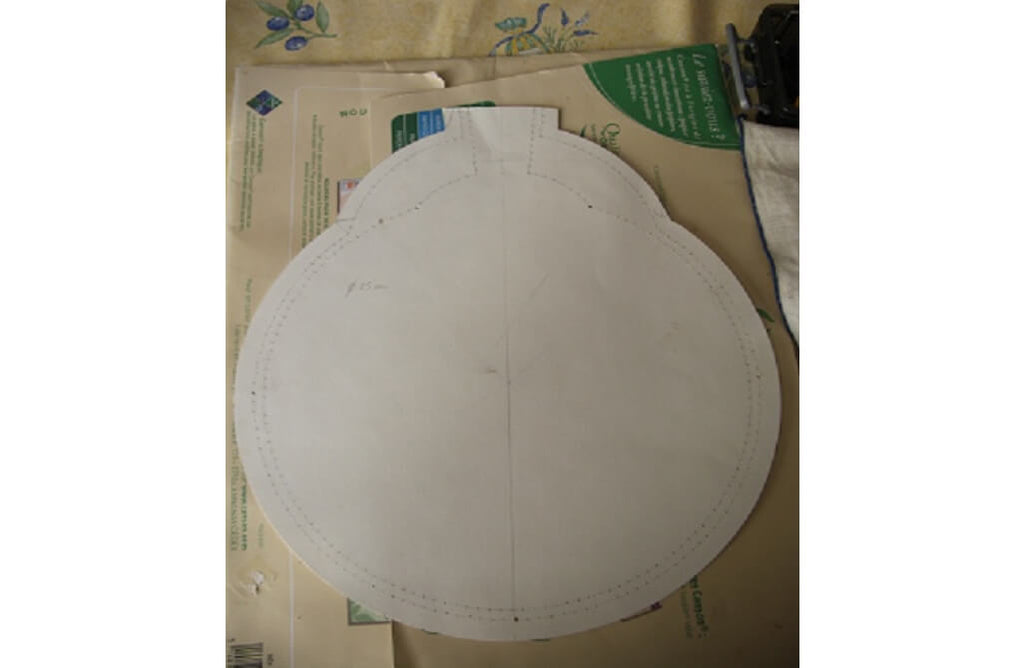
Here, the diameter is 25 cm which is a fairly large size. I would recommend starting with a smaller template, 10 centimeters for example.
I also pre-marked the sewing points on this pattern. If you have a marking wheel, this is not necessary... although it can be very useful for beginners in sewing.
2. TRACING AND CUTTING THE LEATHER
Position the pattern on the leather, crust side and trace the outline using your silver pen/pencil. You get a first side. 
If you have marked the sewing points, turn your pattern over before tracing the second side: this way, when drilling, the marks for the future seams will coincide without any problem! You get two circular faces which you can cut out using your cutter.
3. SEW THE LEATHER PIECES
- Pierce your leather using your awl (or a sharp needle). First, lightly wet the leather and let it dry until the leather returns to its initial color: your drilling will be cleaner.
- Sew in saddle stitch. The main difficulty of this step is the positioning of the two pieces of leather. I recommend using a sewing plier, or if you don't have one, small clamps.
I made a double seam: the strength of the bottle is reinforced.
I chose not to glue the pieces before sewing with neoprene glue given that it is an object intended to contain a liquid. I preferred to avoid contact with all kinds of solvents. 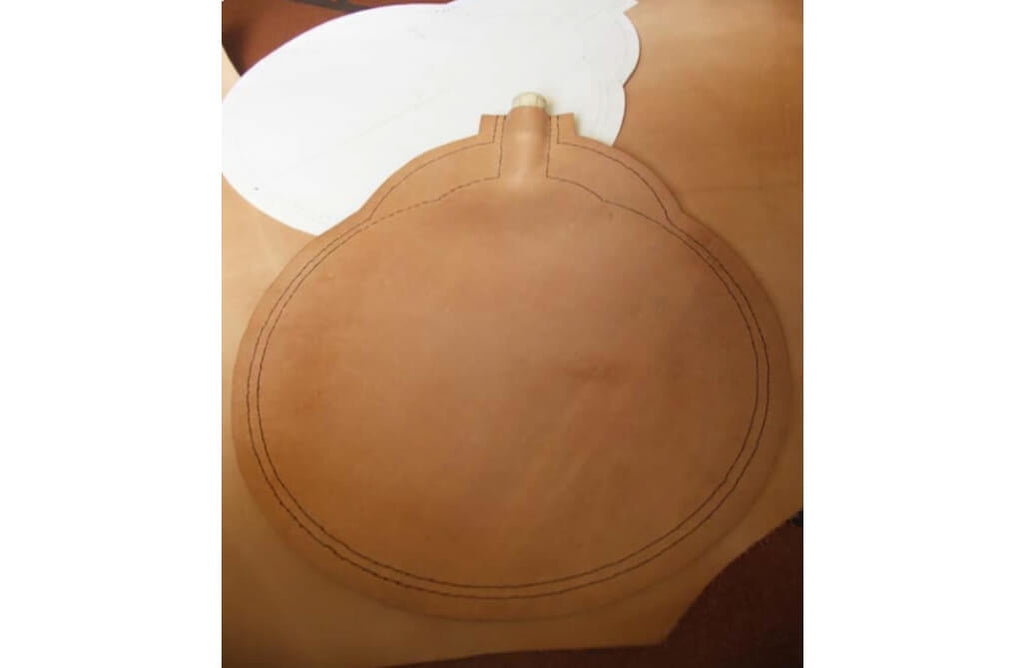
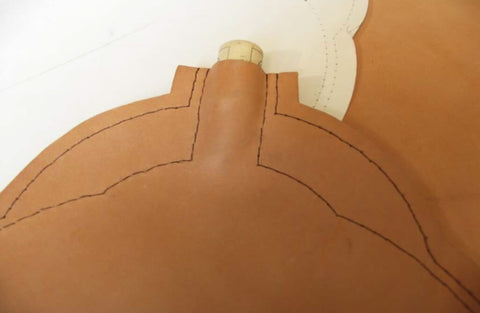 |
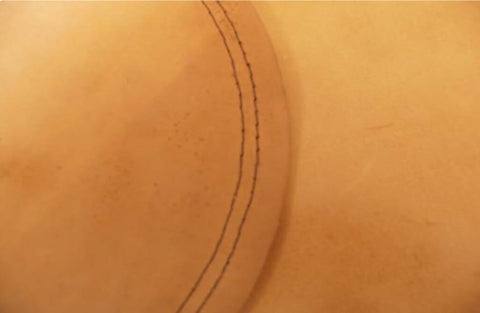 |
To finalize the leather bottle, trim the exterior sides and lightly sand the edges with sandpaper (120 grit) after dampening them. 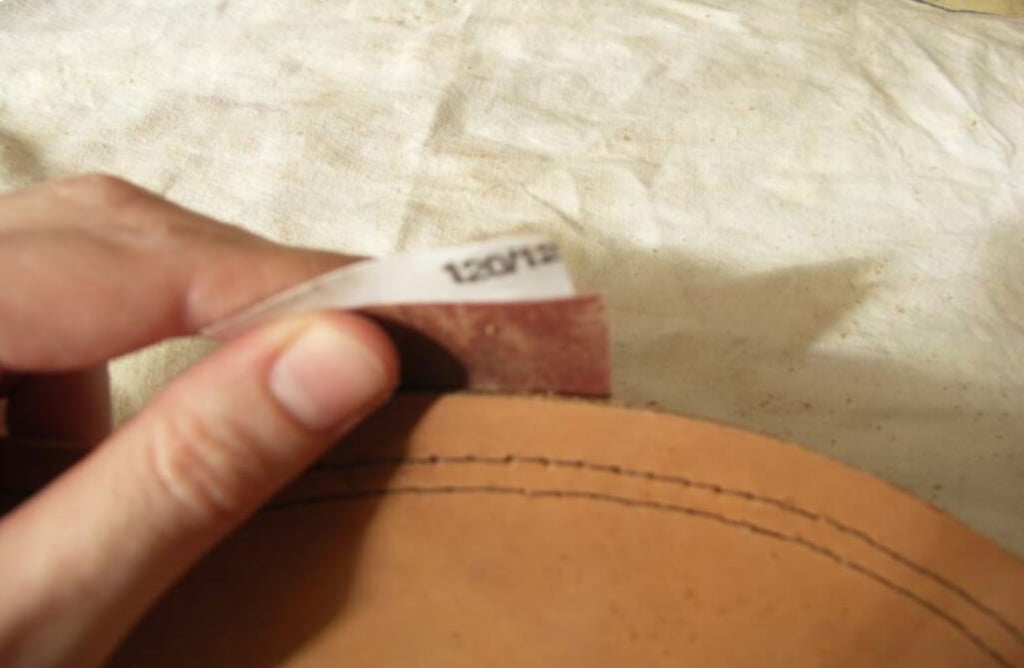
4. SHAPE THE LEATHER
The goal of this step is to give volume to what is still only a two-dimensional shape.
First, completely saturate the leather with water. The easiest way is to completely immerse the bottle in a basin of water. Pay attention to the water temperature! It must be hot but not boiling, otherwise you will “cook” your skin...
To avoid an accident, it's very simple: dip your hand in it... If it's too hot for you, tell yourself that it's also too hot for your leather!
From the moment you immerse the bottle, small bubbles will form on the surface. This is perfectly normal, the skin becomes saturated with water through all its pores. The disappearance of these mini-bubbles after a few tens of minutes will tell you that your leather is saturated with water. 
Let's move on to shaping, for this you need a rigid template to hold your bottle in place by tightening it only on the sides. It is advisable to make wooden contours which will enclose the gourd using clamps.
Here is the model used for this bottle. You will obviously adapt its size to the size of your own bottle. 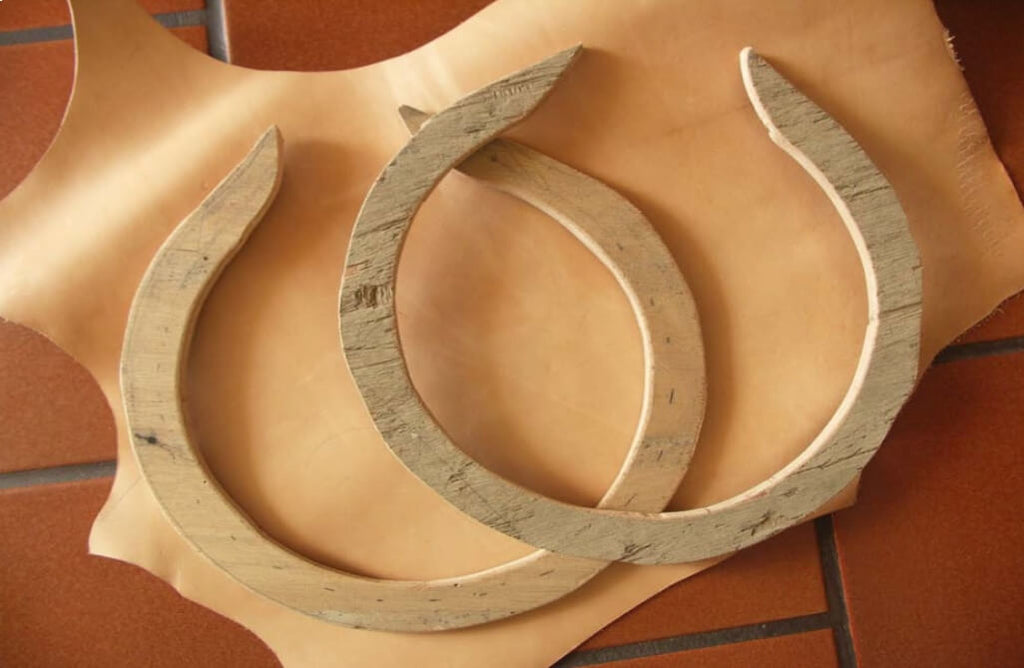
Install the clamps on the leather bottle. 
5. FILL THE BOTTLE
Fill the bottle: you can use sand for example, or any other similar element (corn grain, wheat, clean litter, etc.) 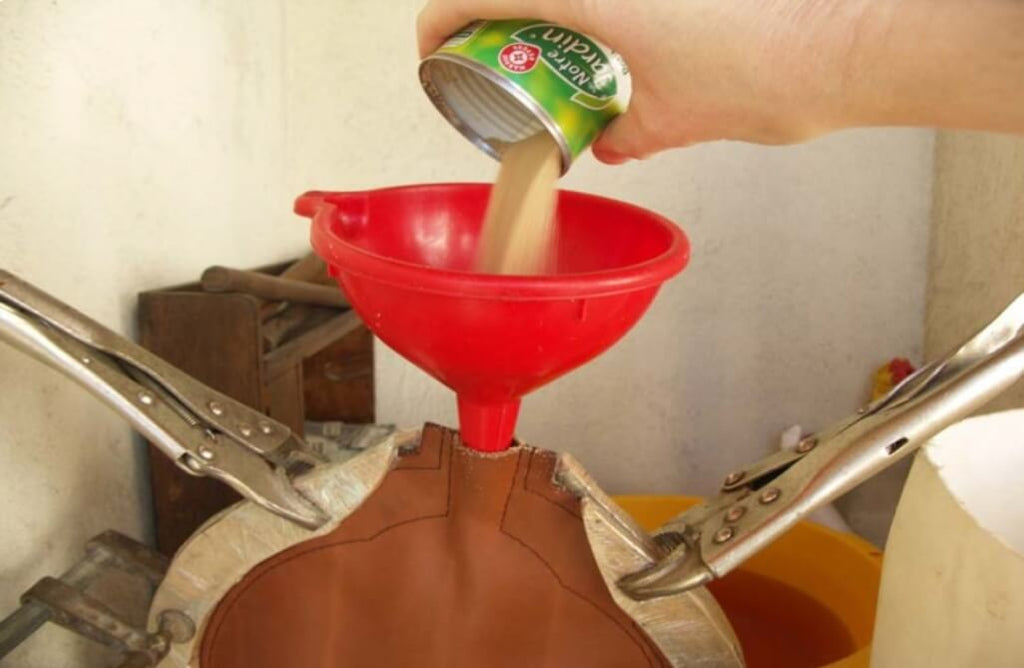
6. TAMP THE SAND
Regularly pack the sand with a stick to give the shape of a gourd little by little. 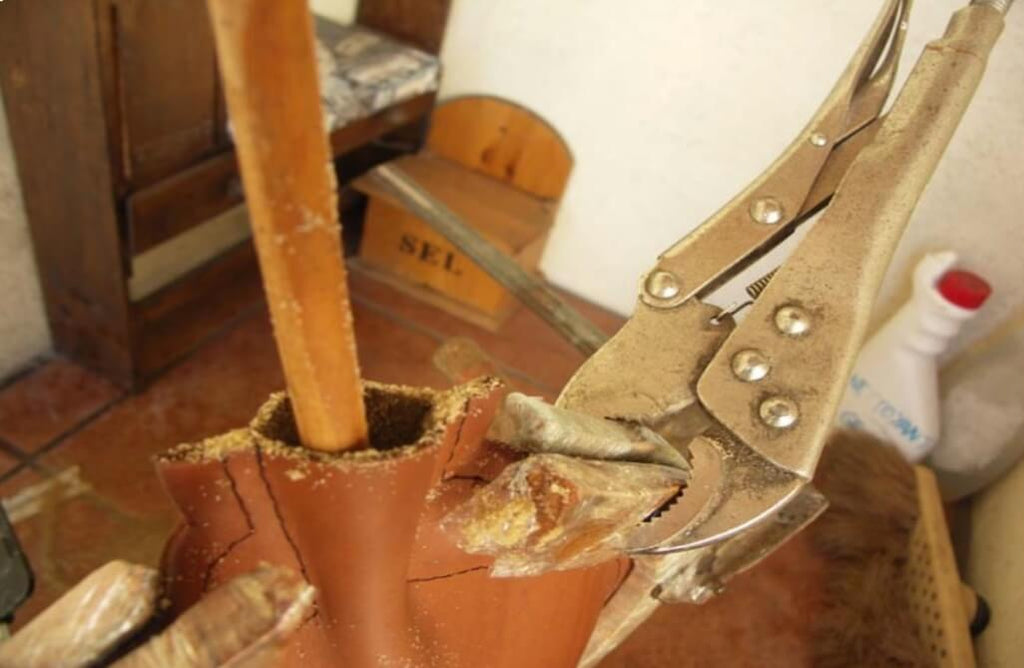
7. MOISTEN THE LEATHER
Remember to regularly moisten the leather with a cloth saturated with water during this step. It must remain malleable and flexible. 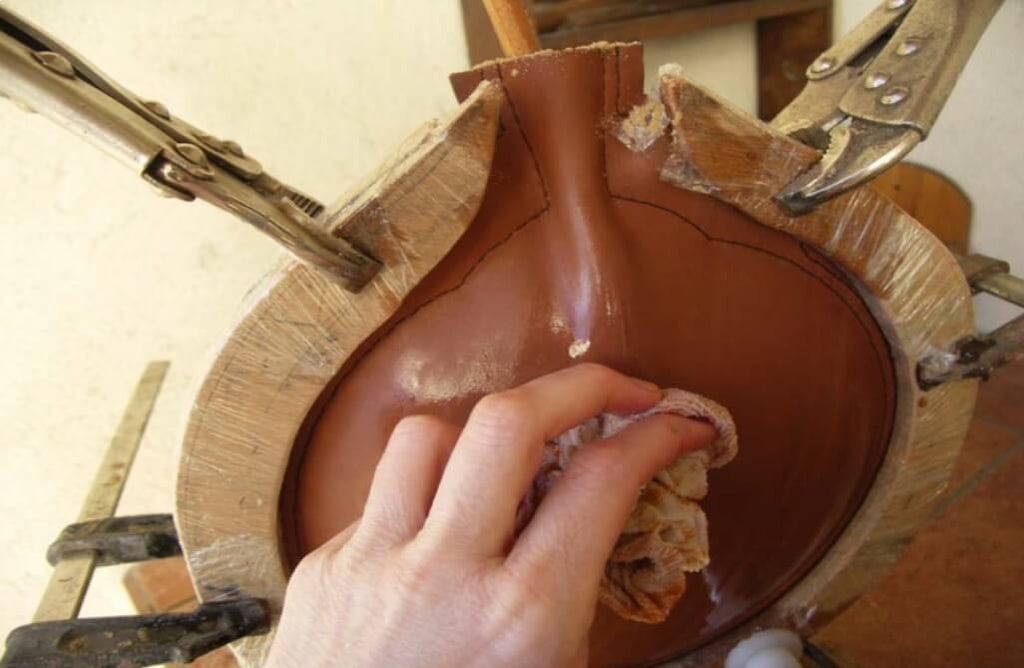
8. FORM THE GOURD
Fill the bottle little by little and remember to pack the sand well on the sides. The gourd will gradually take its final shape. Check the profile regularly to check that the filling is well balanced. 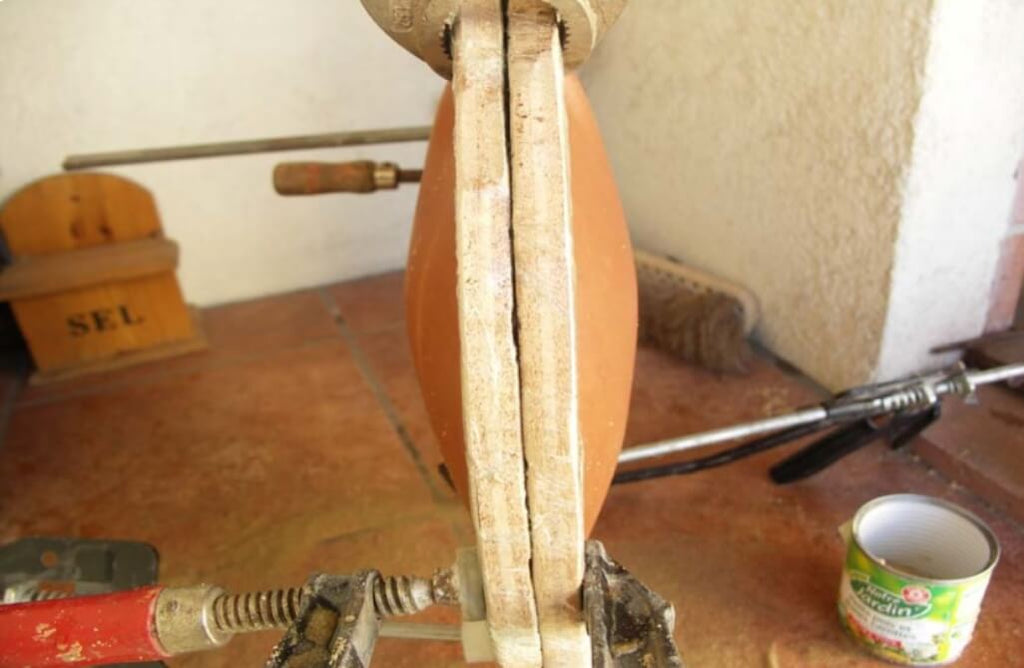
Leave to dry for approximately 24 to 48 hours. Visually, the leather will change color and become lighter. When touched, it will stiffen and take on a cardboard-like appearance.
Once completely dry, empty the sand by turning it over.
Personally, I add an air compressor to blow out any grains that might get stuck in the seams.
The shaping stage is finished, you can move on to wax dipping.
9. BEESWAX DIP
- Before starting, make sure the work surface is well protected to avoid getting wax everywhere.
- Protect your hands with gloves or mittens thick enough to avoid burning yourself.
- Put on a blouse or old clothes that you don't mind damaging.
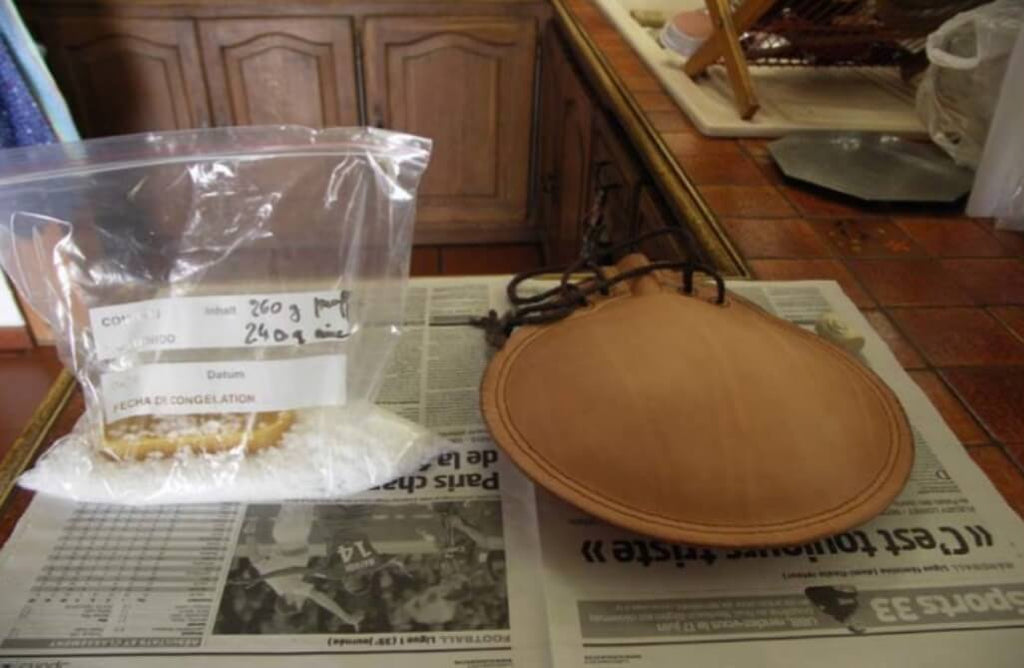
Prepare the amount of beeswax you will need.
For a volume of 1 liter, count around 250 g of beeswax. In my specific case, not having enough wax, I supplemented with paraffin tablets. It is easily found on supermarket shelves and is used for making jams at home.
10. MELT THE BEESWAX
Melt your wax or your wax/paraffin mixture in a bain-marie. Be careful not to burn yourself! 
Monitor the boiling carefully. After about ten minutes, your wax will begin to melt, stir using a wooden spoon to homogenize the mixture. 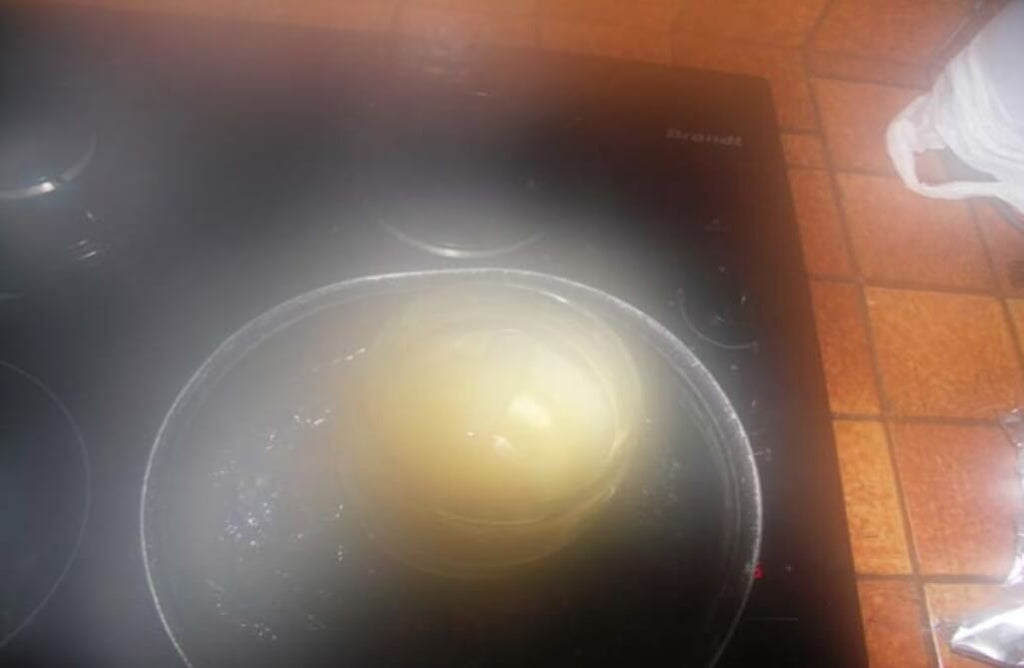
11. POUR THE WAX INTO THE GOURD
Stand over a basin (not plastic) and pour the wax into the bottle.
Using back and forth movements, coat the inside of the bottle and pour the overflow into the basin. 
Work quickly, as the wax cools it will harden and risk forming an excess.
I recommend using the following method:
- Fill
- Cap and turn the bottle 1 or 2 times
- Empty immediately
- Repeat the previous steps (2 or 3 times maximum).
The leather will gradually darken, this indicates that the wax has penetrated well. Here's a photo after applying a single coat: You can see that the gourd is only partially soaked, with the clear area devoid of wax. 
As you can see, I have already punched holes for the hanging strap. It is useful to do this at this stage, this way you will be able to handle the bottle more easily.
12. FINISH THE BOTTLE
This step is optional but allows you to obtain a nice finish on your bottle.
- Spread a thin layer of beeswax on the outside of the gourd. This will strengthen the seal, particularly at the seams.
- Use a lint-free cloth and rub until you remove the sticky side of the wax and obtain a nice shine.


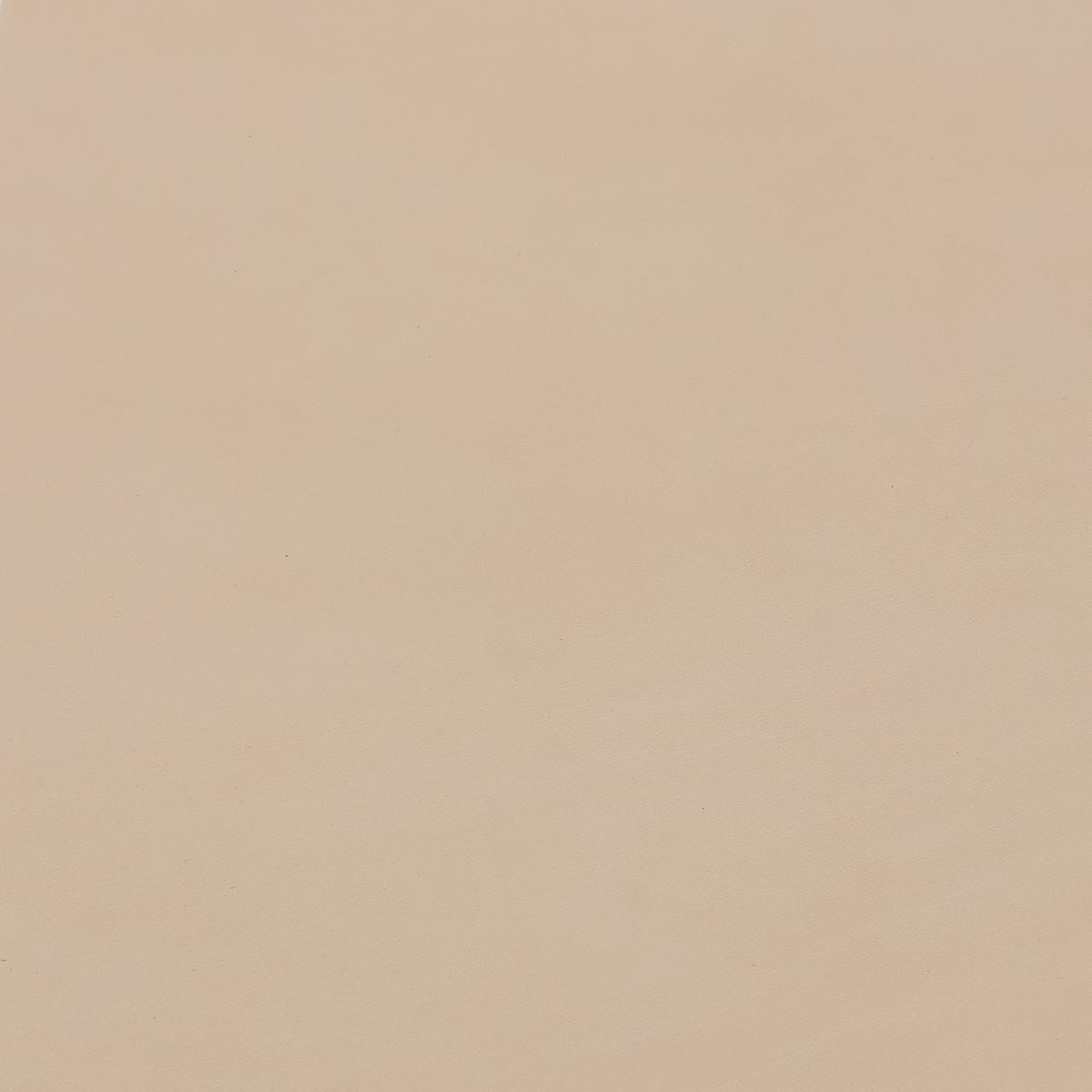

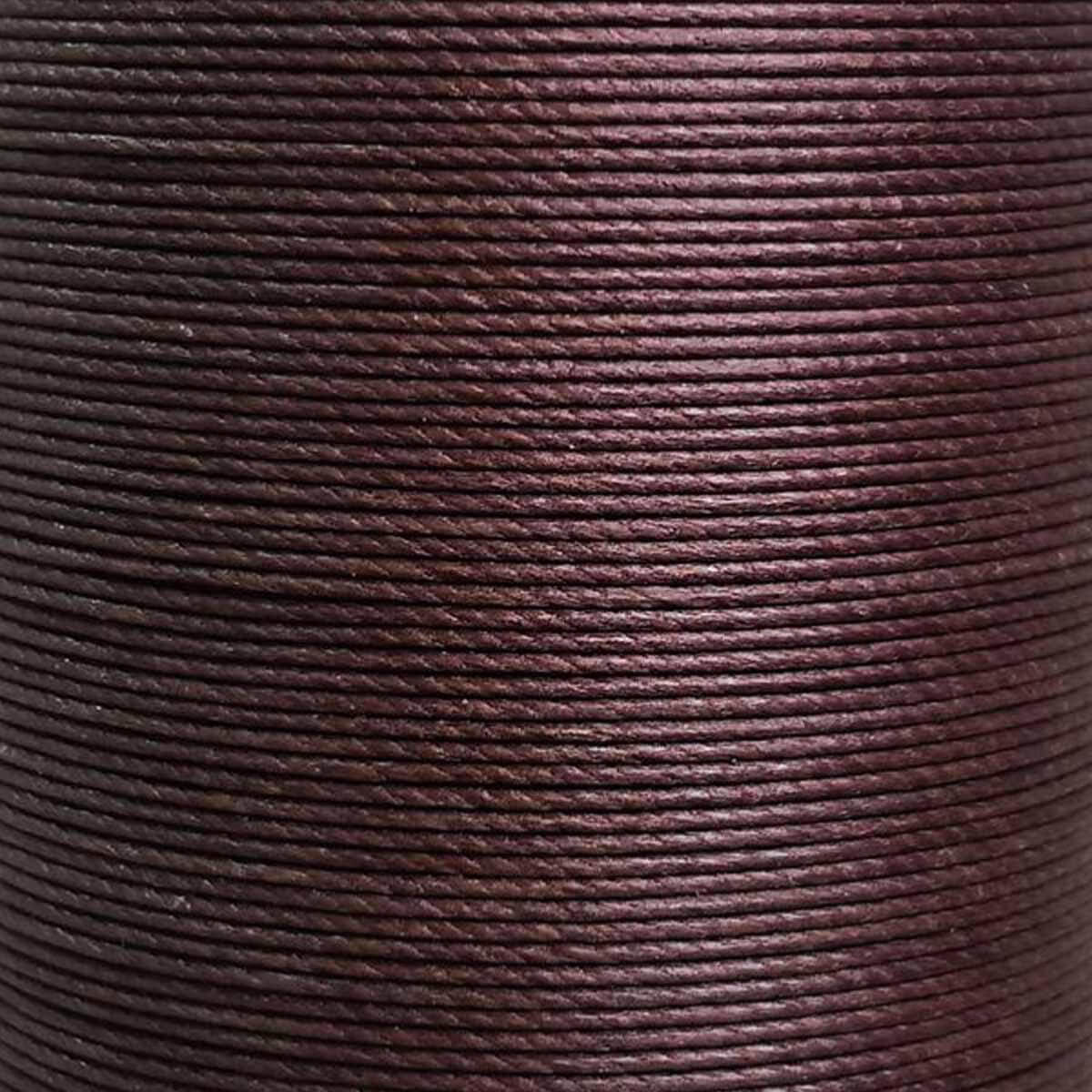

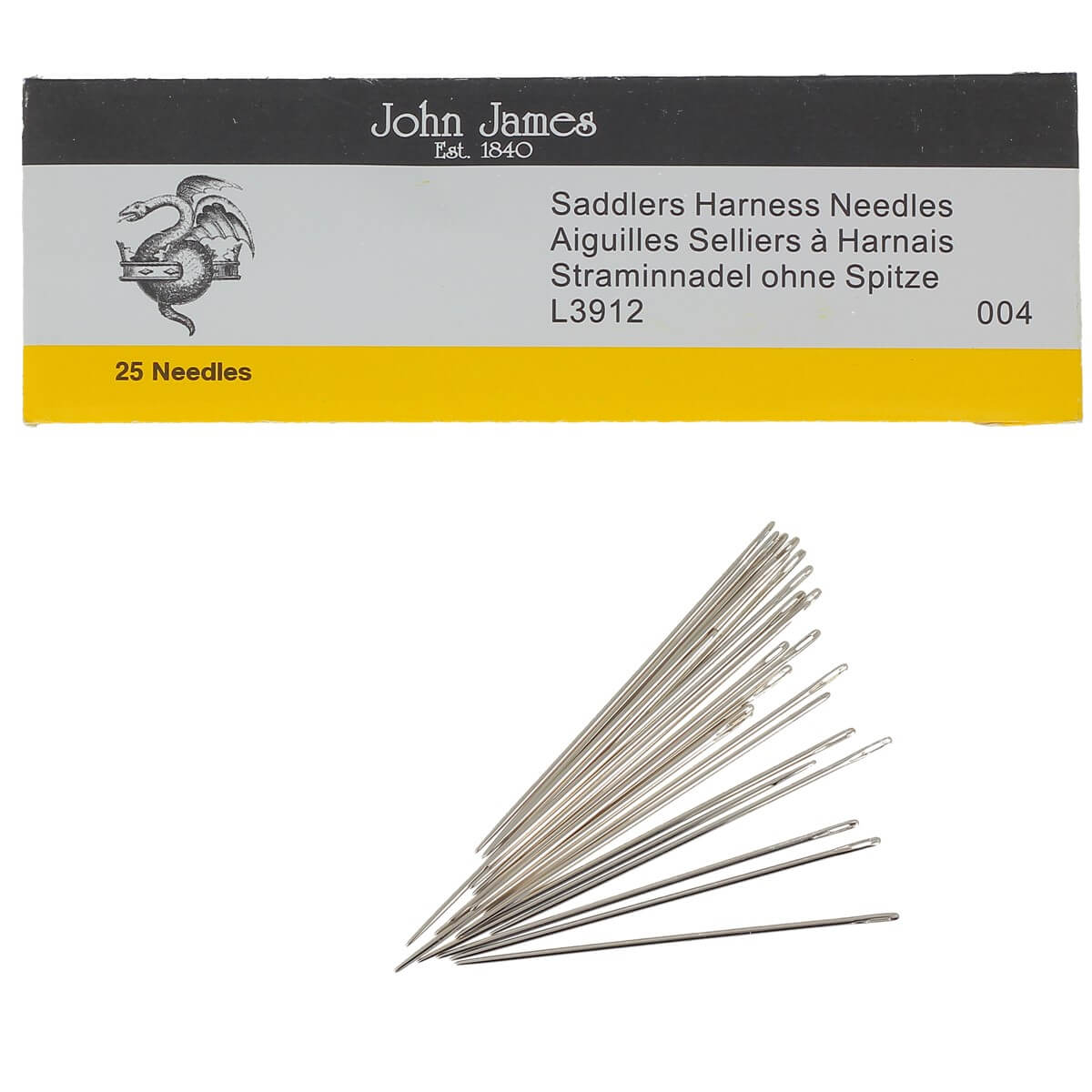
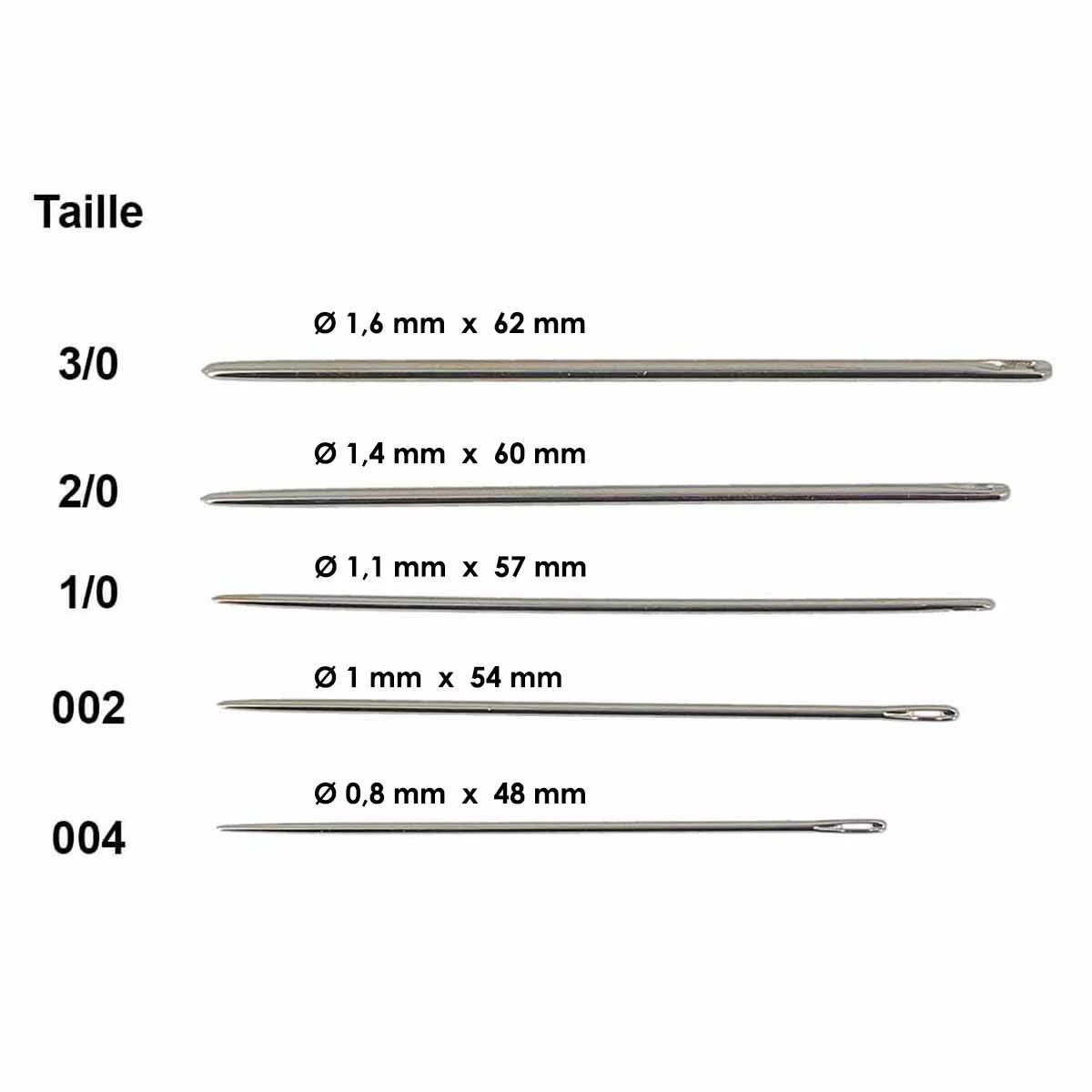
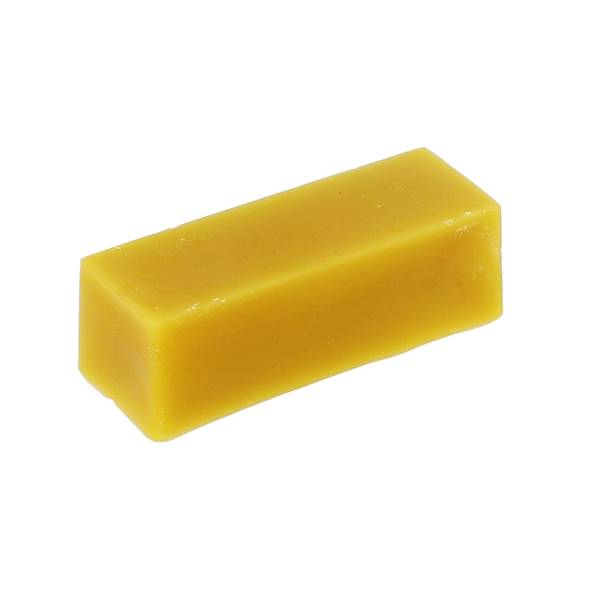


2 comments
DECO CUIR
Bonjour M.Ko,
Nous n’avons jamais fait ce tutoriel avec du repoussage, donc je ne pourrais pas vous répondre avec certitude. Cependant, je pense que c’est tout à fait possible. Peut-être avec un cuir de 3 mm, pour que la gourde soit plus solide, effectivement.
N’hésitez pas à nous partager votre création, nous serions ravis de voir le résultat !
Très bonne journée,
L’équipe Deco Cuir
M.ko
Bonjour,
Peut-on repousser le cuir avant, ou cela va t il fragiliser Gourde, ou le traitement à laquelle elle est soumise va t elle abîmer le repoussage? Si oui, quelle épaisseur de cuir? Faut il prendre plus épais que du 2,5? (Vu que le repoussage va l’affiner)
Merci pour le tutoriel, j’ai hâte de m’y mettre!